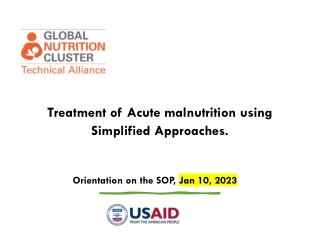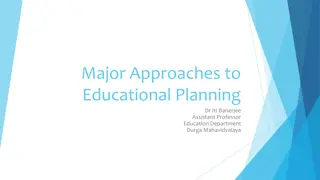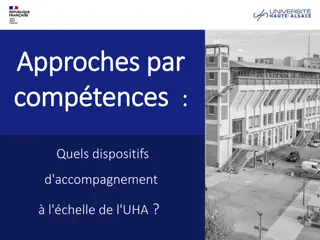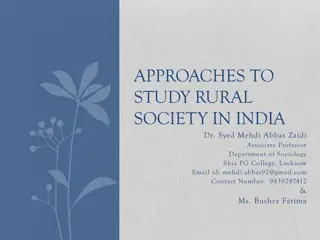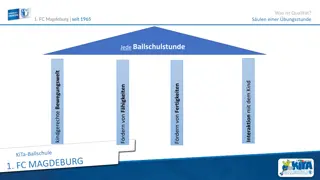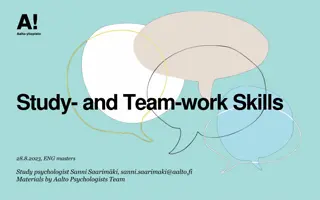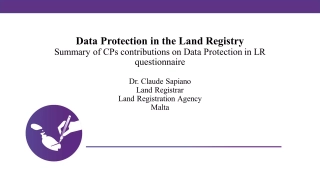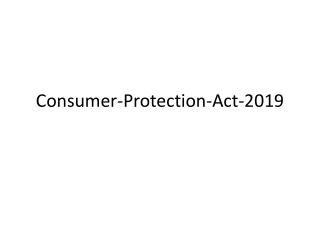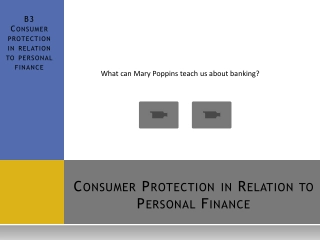Innovative Approaches to Child Protection Information Management in Emergencies
This presentation discusses the collaboration between Child Protection and Information Management colleagues in emergency situations. It covers identifying information needs, methods for cooperation, and obtaining relevant data. The session highlights starting from decisions, walking backwards to fill information gaps, and prioritizing responses based on data analysis. The aim is to enhance coordination and effectiveness in child protection efforts during crises.
Innovative Approaches to Child Protection Information Management in Emergencies
PowerPoint presentation about 'Innovative Approaches to Child Protection Information Management in Emergencies'. This presentation describes the topic on This presentation discusses the collaboration between Child Protection and Information Management colleagues in emergency situations. It covers identifying information needs, methods for cooperation, and obtaining relevant data. The session highlights starting from decisions, walking backwards to fill information gaps, and prioritizing responses based on data analysis. The aim is to enhance coordination and effectiveness in child protection efforts during crises.. Download this presentation absolutely free.
Presentation Transcript
INFORMATION MANAGEMENT INFORMATION MANAGEMENT FOR CHILD PROTECTION IN FOR CHILD PROTECTION IN EMERGENCIES EMERGENCIES @IOM Senegal Facilitators: Date: Presentation: Daunia Pavone
Objectives At the end of this module, you will be able to: to: At the end of this module, you will be able Identify common information needed by Child Protection colleagues and what methods and sources you can use List some Tips for better cooperation between IM, DTM and Child Protection Know who to ask for help on challenges related to related to Data, Analysis and Child Protection 4
Session at a Glance 1. How can IM and CP colleagues work together? 2. Child Protection in Emergencies 3. What information do CP colleagues need 4. How can this information be obtained? 5. Tips of better Cooperation Lessons Learned Remember Final Test & Evaluation of the Webinar
Part 1: How can Child Protection & Information Management colleagues work together?
Start from Use/Decisions not from Questions Decision to be made (USE) Walking backwards! Information gaps Methodology Data Collection Tool and (Questionnaire & Analysis Plan)
Walking Backwards: Start from the DECISIONS that the you have to make Decision Whether or not to respond Priority Groups What Geographical Areas should we prioritize? Child Protection priority responses Defining the aim and strategy of the response Population Targeted
Walking Backwards: identify what information we need to make those decisions Decision Information Needs What impacted by crisis? areas are most What Geographical Areas should we prioritize? Where are families not able to access basic goods and services? In which locations there are inadequate CP services? How there? many children live
Walking Backwards: method & source Methods and Source for each Info Need Decision Information Needs impacted by crisis? Where are families not able to access basic goods and services? In which locations there are inadequate CP services? Secondary data on where conflict /natural disaster impacts What areas are most HH-level interviews (Food security, Use of CP services, barriers for families) What Geographical Areas should we prioritize? Key Informants Interviews (availability of services) Experts interviews with CP service providers (quality of services) Focus Group Discussions with women and children (barriers to access to services for specific groups) there? How many children live Key number of children) Informants Interviews (estimated
Walking Backwards: example of the results Question Text & Mock-up of results According to key informants xx% of sites have limited physical access. In xx sites, KI could not answer.
Use the chat to tell us: Who does WHAT? DECISIONS: CP Colleagues/Partner should know what decision they have to make, the USE of the information & tell IM/Assessment colleagues Decision to be made (USE) INFORMATION: CP should know what information they need but do not have & tell IM Information gaps Methodology METHODOLOGY: IM IM /Assessment colleagues identifies the methodology to use in the context, and/or tell CP if the information needed can be collected with that methodology DATA COLLECTION TOOLS: IM (with CP colleagues/ Partner) IM/Assessment colleagues design the questions and mock-up analysis and CP colleagues verifies that they can use the analysis Data Collection Tool and (Questionnaire & Analysis Plan)
Part 2- Child Protection in Emergencies
Answer the mentimeter: What risks can children face in a humanitarian crisis? Click on the link: Or go to menti.com and use this code: XXX
Risks Faced by Children in Humanitarian Crisis https://www.youtube.com/watch?v=pEaNwDtQRwI
Which CP Risk does this image suggest? Write your answer in the chat 1
Which CP Risk does this image suggest? Write your answer in the chat
Which CP Risk does this image suggest? Write your answer in the chat
Which CP Risk does this image suggest? Write your answer in the chat
What is Child Protection in Emergencies? The prevention and response to abuse, neglect, exploitation and violence against children Child Protection Area of Responsibility Abuse Neglect Basic needs not being met Lack of access to education Lack of access to needed medical services . Physical Sexual Psychological Emotional Violence Exploitation Child Labour Forced begging Sexual exploitation Abuse Exploitation Neglect
3 types of Child Protection Activities Examples of Child Protection Activities Examples of Child Protection Activities Child Protection Mainstreaming/ Safe Programming Child Protection Integration with Other Sectors Stand Alone Child Protection Activities
Examples of Child Protection Activities Examples of Child Protection Activities Examples of Child Protection Activities Stand Alone Child Protection Activities Parenting programmes Psychosocial support Victim assistance Case management CP services to fill gaps Strengthen laws to prevent harm to children Advocacy for access to birth registration Risks education Training of local CP service providers/ social workers Safety audits
Examples of Child Protection Activities Examples of Child Protection Activities Examples of Child Protection Activities Child Protection Integration with Other Sectors Stand Alone Child Protection Activities Food Security Sector: Cash/vouchers to most vulnerable to mitigate child labour and exploitation Education Sector: Training education providers on how to make safe referrals to child protection services All Sectors: Working with service providers to help them adopt child safeguarding policies
Examples of Child Protection Activities Examples of Child Protection Activities Examples of Child Protection Activities Child Protection Mainstreaming/ Safe Programming Child Protection Integration with Other Sectors Stand Alone Child Protection Activities WASH & Education: Separated girls/boys toilets CCCM: Addressing hazards in camps/communities All sectors: Priority Distribution Access for UASCs and other vulnerable groups All sectors: Distance to distribution/service points FSL: No children allowed working in Cash For Work projects
Part 3: What information do Child Protection colleagues need?
Answer the mentimeter: What information do you need for Child Protection response? Click on the link: Or go to menti.com and use this code: XXX
ANALYSIS FRAMEWORK: CAUSES Threats Capacities Impact
Part 4: How can we obtain the information we need for Child Protection analysis?
Analysis considers multiple datasets from different sources, obtained through different methods. This enables validation, spotting of errors, identification of areas of further inquiry and increased understanding.
Each method and source provides some information, not others - Facility Assessment - Service Mapping Institution - Individual Interviews Individual Depth of information - Household Interviews Household Affected Group - Focus Groups Discussions - Key Informants Interviews - Community Group Discussion Community Time, staff in the field and cost
Search for existing data Identify needed information Primary data collection- Collect data yourself Primary data collection- Use someone else's data collection Source: NIAF Handbook for Child protection Analysis IM guide for CP
Some Sources of Information for Child Protection Government data (census, prevalence data) from National and Local authorities CP Civil Society (e.g., local NGOs) research CP academic research DTM exercises (with households, Key Informants, Individuals ) Interviews with Service Providers and Protection/Child Protection experts Focus Group Discussions Multi-sector household assessments (MSNA, etc.) Vulnerability Assessment Mapping (VAM WFP) Other Sectors/Cluster priority areas Case Management (CPIMS) AGGREGATED DATA ONLY If CP colleagues want to know other sources for CP data, refer them to the NIAF (Annex 20 Information Sources and Methods of Data collection - https://www.dropbox.com/sh/mgkodj8q64c4gws/AADP0PvG2OWRW_uDTasFpvvEa?dl=0)
Example: Data for CP Analysis in South Sudan Data partially usable (not collected at the same unit of analysis) but providing an overview SOUTH SUDAN MSNA data Relevant indicators, looking at negative coping mechanisms, (e.g. child labour, child marriage, children out of school) FSNMS+ CP needs analysis and severity Incident monitoring data, looking at some CP risks (e.g children safety, recruitment in armed groups) Public data (ACLED) Data interpretation and analysis based on field expertise Expert judgement
Sure: Let us see how we can get information for each of the different components of the Analysis Framework! Mhhhhh: Can I get some more examples?
CAUSES Unsafe Physical Environment: Secondary data on area and impact of earthquake, floods, front lines, presence of armed groups in the area: OCHA , UNDSS, Media, Research Institutes like International Crisis Group, debrief with staff and NGOs in the field . Explosive Ordnance: UNMAS maps, DTM data on Explosive ordnance, Government agency for demining Displacement: Locations, numbers of IDPs, SADD, place of origin and routes: from DTM KII MSLA, UNHCR (refugees), OCHA.
Types of Obstacles to meeting basic needs Access Availability Appropriateness Use Quality Awareness Existing Authorities data and Reports & Research by Humanitarian, Development Organizations & Academia Key Informants Interviews (KII e.g., DTM MSLA) KII Facility Assessment / service Mapping/ Expert Interviews Household Interviews quantitative Household Interviews quantitative FGD (for each group) (distance) FGD (barriers by group) HH (for HH) FGD (qualitativ e for each group) FGD Individual Interviews (by Individual and SADD) (qualitativ e for each group) Facility Assessment / service Mapping/ Expert Interviews Household Interviews (barriers by HH) FGD (by group) Individual Interviews (by Individual and SADD) Individual Interviews (by Individual and SADD) HH (by HH) Expert Interviews Individual Interviews (barriers by Individual and SADD) Individual Interviews (by Individual & SADD) Focus Group Discussions (FGD)
CAUSES Existing Reports & Research by Humanitarian, Development Organizations & Academia Focus Group Discussions (for each group) Interviews Context and Protection Expert Interviews with Protection field staff from local NGOs and local staff
CAUSES Existing Legal Analysis and Laws Existing Reports & Research by Humanitarian, Development Organizations & Academia Interviews with Legal practitioners and Protection Expert (on implementation and bottlenecks) Interviews with Protection field staff from local NGOs and local staff (on access to justice, implementation and bottlenecks) KII on access to documentation (estimation by community) FGD on barriers to access to documentation (by Group) HH interviews on access to documentation (by HH)
ANALYSIS FRAMEWORK: Threats
Understand CP Threats Expert Interviews (what are the main threats and where - e.g., school? Family? Work?) Aggregated data from case management (What, Where, How, Who? changes) Existing reports and data (modalities of FGM and Child Marriage) Demographic roster in HH surveys with indirect questions (Child Marriage prevalence only). Observation and Key Informants interviews (what are the main infrastructure threats to children?) Existing data and reports on Explosive Ordnances (where are EO a threat?) HH Survey (what are HH afraid of) Existing reports and data from authorities and organizations (reasons, modalities of recruitment, types of work, Expert Interviews (modalities of separation, increases, changes) Non-specialist key informant (alerts on larger numbers of UASC) Registration (UASC only) Interviews with Service providers (types, groups, dynamics, increases, attitudes) HH Survey (% of HH with children manifesting signs of stress) Expert Interviews MRM focal point (What, Where, How, Who? & changes) Existing reports (What, Where? How? Who?) FGD (reasons and groups attitudes towards that) NEVER try to collect data on incidents prevalence
ANALYSIS FRAMEWORK: Capacities
Capacities Availability: KII, Experts, FGD Access and Barriers: FGD, Individuals Quality: Facility Assessment/ service Mapping, FGD Appropriateness: FGD, Expert Interviews Use: Admin records from services Awareness: FGD Experts Interviews (CP and legal) Existing laws Existing research and reports (see slide on Causes for details) Type of systems and how they work, who uses them, potential negative consequences Experts Interviews FGDs DO NOT ASK ABOUT SERVICES FOR SURVIVORS OF VIOLENCE IN HH INTERVIEWS.
ANALYSIS FRAMEWORK: Existing research and reports Experts Interviews Ministry of Health Impact
Annex 20 to the NIAF: Annex 20 to the NIAF: Data, sources and information needs for each CP main information needs for each CP main Decision (and CP risk) Decision (and CP risk) Data, sources and Available at this Available at this lin link k & in your resource package & in your resource package https://www.dropbox.co m/sh/a3uc5oc88eylery/ AABxoGzt0vsDx1A3KU pMNY7na?dl=0&previe w=Annex+20+Informati on+Sources+and+Metho ds+of+Data+collection. pptx
You said I cannot collect prevalence: but then how can I prioritize WHERE to respond? Use the chat or the mic to tell us how you would do it! Find out where the living conditions and other situational factors will increase the RISK of child protection incidents using proxy indicators. You will respond where the risk is higher (higher threat, larger vulnerable population and fewer resources)
Example: Using data for strategic decision making Ethiopia: Identifying Most Ethiopia: Identifying Most- -Affected Geographic Areas Affected Geographic Areas No need of external assistance Need of humanitarian assistance Acute and immediate need of humanitarian assistance 0 1 2 3 4 5 6 Topics No problem Minor problem Moderate problem DTM KI & National Census Major problem Severe problem Critical problem Catastrophic problem Magnitude of problems in terms of % affected population IDP burden on host community No IDPs 5% 10% 20% 30% 40% 50% 0% 1-10% 11-25% 26-50% 51-75% 76-99% 100% Integrated analysis % IDP children out of school WFP, Education Cluster & Shelter Data 0% 1-10% 11-25% 26-50% 51-75% 76-99% 100% Integrated analysis % IDP in high-risk shelter 0% 1-10% 11-25% 26-50% 51-75% 76-99% 100% Integrated analysis % IDP with food insecurity OCHA & Mine Action data External Factors (Access, reported UXOs etc) 0 incidents 10 incidents 50 incidents 100 incidents 150 incidents 200 incidents > 200 incidents 0% 1-10% 11-25% HH assessments (e.g., MSNA) 26-50% 51-75% 76-99% 100% Coping Mechanism % of IDPs resorting to negative coping mechanisms Case management and response services are available Up to 4 services are provided DTM KI & Health Sector data Up to 3 services are provided Up to 2 services are provided 1 service provided No services provided Availability of CP and medical services
Using DTM MSLA data for CP decision making Data from Key Informants collected through DTM MSLA were important for the decision-making process Strategic Decisions Priority sites Priority sites for protection monitoring People In Need & Children in Need # s Operational decisions: Where to set up sub-bases, # staff, humanitarian access
Let us try using data to analyse! 15 mins Group Work Read the provided data (Child Protection Analysis Scenario.pdf) Make one statement about a child protection risk, and suggest a response action Share with other groups your one statement about a child protection risk, and suggested response action
Part 5 - Some tips for better cooperation between IM & Child Protection
Lessons Learned: Designing the Questions If I had one hour to solve a problem and my life depended on the solution, I would spend the first 55 minutes determining the right question to ask, for once I know the proper question, I could solve the problem in less than five minutes. Will the answer tell me something I don t already know? Albert Einstein


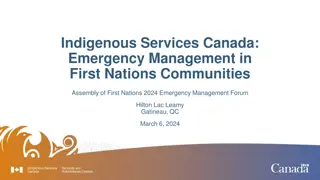
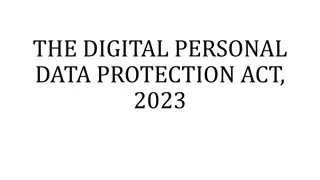
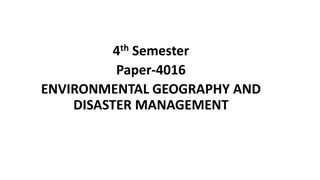
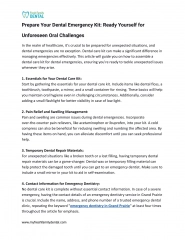
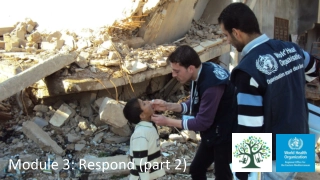

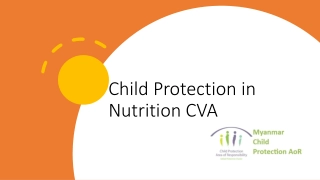
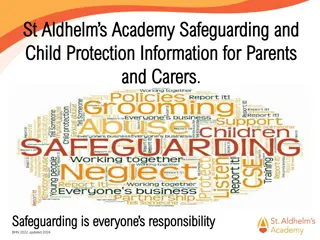
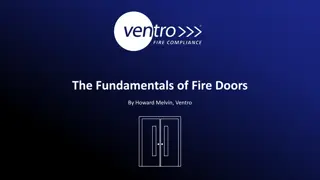
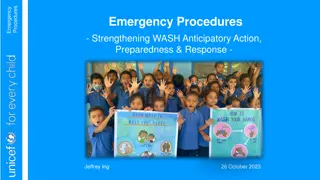
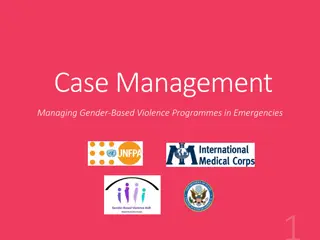

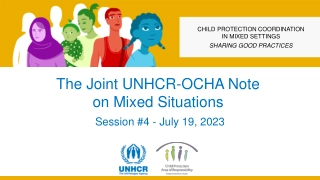
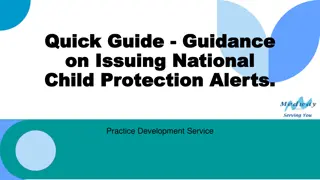
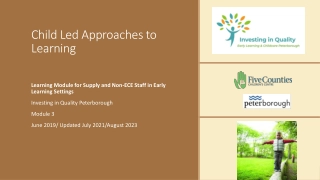
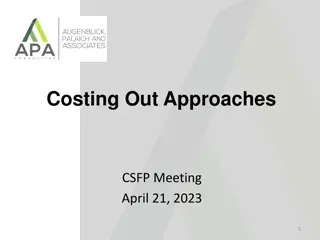

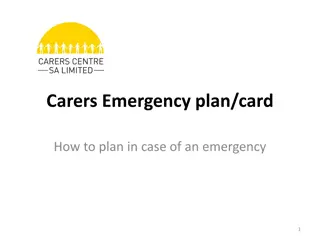

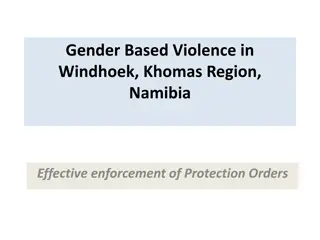
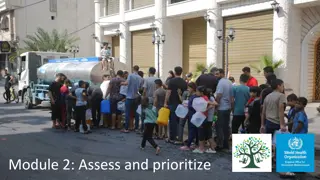

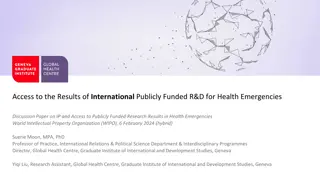
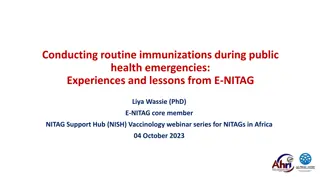
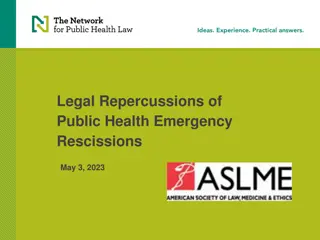
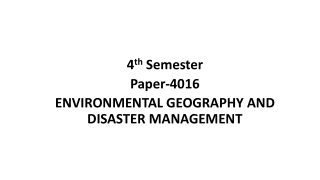
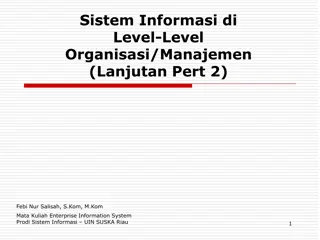
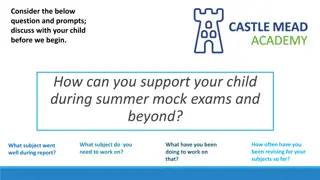
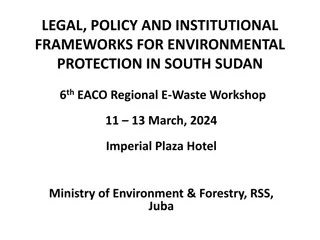
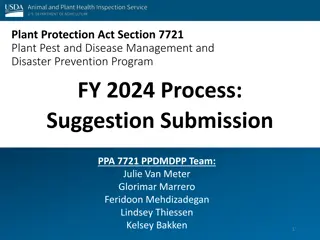
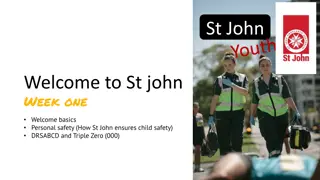
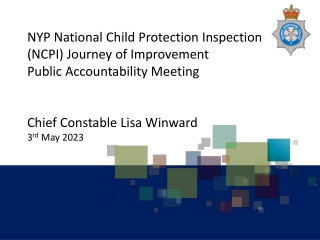
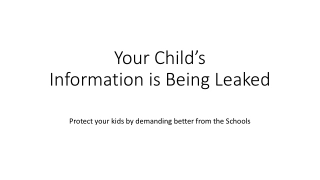
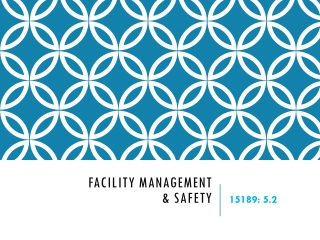

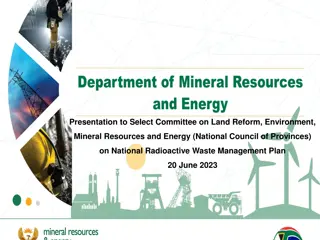
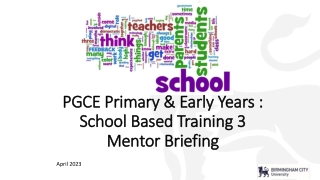
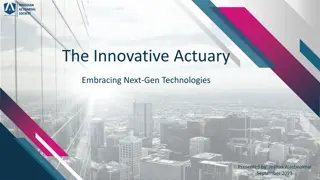
![get⚡[PDF]❤ Building Habitats on the Moon: Engineering Approaches to Lunar Settle](/thumb/21624/get-pdf-building-habitats-on-the-moon-engineering-approaches-to-lunar-settle.jpg)
